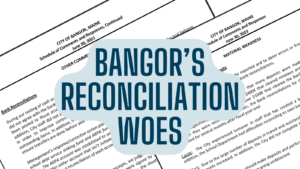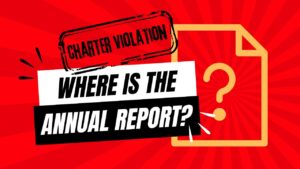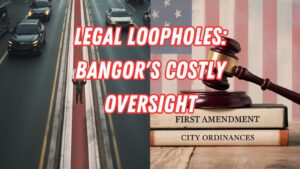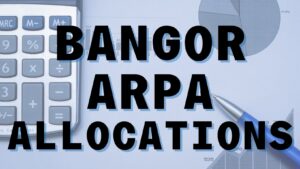
On Friday, the city made public a memo written to Bangor City Council by City Manager Debbie Laurie. In the memo, the City Manager outlines a conflict between the city and those working to save lives in the midst of an ongoing opioid crisis.
The issue? Where proposed Syringe Services Programs (SSP) should be allowed to operate. While the city claims to support harm reduction efforts, the memo reveals a disagreement over the program’s location.
The city manager seems hesitant to allow the program on public property, favoring private alternatives. This raises important questions about public health priorities and equitable access to resources in Bangor.
Breaking Down the Memo
On December 1st, I met with a representative of Needlepoint Sanctuary who indicated they intended to submit an application to become a mobile syringe provider. During that meeting, I never attempted to dissuade the application but I did share our preference that the locations not be in Pierce Park or Pickering Square.
Excerpt from memo to Bangor City Council from City Manager Debbie Laurie dated March 21, 2024
- The Setup: The City Manager establishes the initial meeting with Needlepoint Sanctuary, framing it as informational.
- Contradiction: Notice the contrast between “never attempted to dissuade the application” and the immediate expression of disapproval for specific locations. It implies an attempt to influence Needlepoint’s decision without outright opposition.
- Missing Information: What were the reasons behind objecting to Pierce Park and Pickering Square? Were concerns about safety, visibility, or something else raised? This omission is significant.
The City has been, and will continue to, support harm reduction strategies within our community. As a City, we devote significant resources to support harm reduction not only within our community but regionally as well through a variety of Public Health programs and initiatives, including serving as the point of distribution of Narcan across five counties.
Excerpt from memo to Bangor City Council from City Manager Debbie Laurie dated March 21, 2024
- Emphasizing Support: The city heavily emphasizes a commitment to harm reduction. This could be an attempt to preempt accusations of being against efforts to help people struggling with addiction.
- Narcan vs. Syringe Exchange: Highlighting Narcan distribution is interesting. Both programs are considered harm-reduction but differ significantly. Narcan reverses opioid overdose, while syringe exchanges focus on preventing the spread of diseases like HIV and Hepatitis. The city may be more comfortable with a reactive program (Narcan) than one some perceive as enabling drug use (syringe exchange).
On March 1st, staff become aware that the Maine CDC approved Needlepoint Sanctuary’s application to operate three mobile syringe service program outreach locations in Bangor, including the following locations; intersection of Texas Avenue and University Way, 100 Broad Street, alongside Broad Street Park (Pickering Square), and 125 Harlow Street (Pierce Park).
Excerpt from memo to Bangor City Council from City Manager Debbie Laurie dated March 21, 2024
- Timing Matters: Note the emphasis on “March 1st” highlighting that the city learned of the CDC’s approval well after the decision was made. This reinforces the City Manager’s feeling of being excluded from the process.
- Specific Locations: Listing exact locations personalizes the issue. It makes it less abstract and places the exchange sites within familiar Bangor landmarks.
- “Including”: This word choice suggests that the city might object to any of the locations, but finds the inclusion of Pierce Park and Pickering Square particularly objectionable, likely due to the earlier meeting.
It’s interesting to note that the memo specifically mentions Pierce Park and Pickering Square. These are likely familiar locations to Bangor residents, and highlighting them might evoke negative associations with drug use or disruptions in the parks. Could this be a way to indirectly influence public opinion? By mentioning these well-known areas, the City Manager might be hoping to spark public concern and encourage residents to contact the CDC in opposition to these specific sites.
As part of the State’s application process, SSPs are required to provide notice to the municipalities of their intent to file, but that notice does not include proposed locations. Applications are reviewed by the Syringe Service Program Certification Review Team and recommended for action to the Director of the CDC, who has ten days to issue a final decision.
Excerpt from memo to Bangor City Council from City Manager Debbie Laurie dated March 21, 2024
- The Rules: The statement clarifies what is legally required in the application process – informing the municipality of intent, but not specific locations. This sets up the City’s later point about not being included in the decision-making.
- The Bureaucracy: The memo outlines administrative steps undertaken by the state (review team, CDC Director). This could highlight the seemingly impersonal decision-making process from the City’s perspective.
- The Timeline: Mentioning the 10-day decision window adds a sense of urgency. It underscores the City’s perception of being blindsided and having limited time to respond.
As the locations identified are public property, the City was not contacted or consulted as to whether or not the identified locations would be appropriate within our community.
Excerpt from memo to Bangor City Council from City Manager Debbie Laurie dated March 21, 2024
- Who Decides “Appropriate”? The word “appropriate” is subjective. What does the city deem appropriate? It leaves room for the City to argue based on factors beyond just public health concerns. Are they concerned about the program’s visibility, its proximity to other amenities, or something else entirely? This ambiguity leaves room for potential bias.
- Consultation vs. Approval: While consultation would have been courteous, it’s important to remember that the Maine CDC is the decision-making authority on SSP locations. The city might wish for veto power, but that’s not necessarily how the process is designed.
Council Chair Pelletier and I met with representatives from the CDC on March 8th and March 15th. We had requested that alternate locations be utilized for the service and shared that the alternatives proposed by the provider were not acceptable either: Abbott Square and Waterfront. We have provided potential alternative sites (private property) that the CDC is committed to follow up on promptly.
Excerpt from memo to Bangor City Council from City Manager Debbie Laurie dated March 21, 2024
- Persistence: The City Manager highlights their persistence by mentioning two separate meetings with the CDC. This reinforces their determination to influence the outcome.
- Rejection of Alternatives: It’s significant that the City rejected Needlepoint Sanctuary’s suggested locations (Abbott Square and Waterfront), showing that the objection may not be solely about specific parks. Why are these unacceptable? This raises questions about what the City is willing to accept.
- Private Property Push: The City Manager emphasizes private property alternatives they suggested, potentially as a way to shift the program away from prominent public spaces. This could be perceived as an attempt to minimize visibility.
- CDC’s Commitment: The phrase “CDC is committed to follow up” hints at potential optimism from the City’s perspective that a change could still occur.
Ensuring equitable access to our public spaces has been a sentiment shared by our residents, visitors, businesses and members of the City Council.
Excerpt from memo to Bangor City Council from City Manager Debbie Laurie dated March 21, 2024
- Broad Appeal with No Specifics: The City Manager invokes the support of “residents, visitors, businesses, and members of the City Council,” suggesting widespread agreement on the issue. However, the memo provides no specific evidence of the extent of this support or how it was gauged. This attempts to cloak the city’s opposition as simply representing the will of the people, without offering concrete proof of that support.
- What is “Equitable Access”? This phrase is cleverly ambiguous. Does it mean access for everyone? Or is it a veiled way of saying they want to prevent certain groups (people who may use the syringe exchange) from accessing certain spaces?
- Contradiction: This emphasis on “equitable access” directly contradicts the earlier objection to the use of specific public parks for the syringe exchange program.
While an SSP does not result in syringe waste per se, as a community the amount of syringe waste within our public spaces presents a public health risk to all.
Excerpt from memo to Bangor City Council from City Manager Debbie Laurie dated March 21, 2024
- Minimizing, Then Maximizing: The memo seems to downplay the connection between SSPs and syringe waste, but then immediately emphasizes the danger of syringe waste in general. This creates a contradictory message.
- Fearmongering? Focusing on the “public health risk to all” resulting from syringe waste could be a way to stoke fear about the syringe exchange program. It implies an increased risk without providing concrete evidence.
- Missed Connection: The memo doesn’t acknowledge that syringe exchange programs actually help reduce syringe litter by providing safe disposal options.
As more and more community members have become aware of the recent CDC action, they have expressed significant concerns for the actions taken by the State on this application. As we continue our discussions with the CDC, we wanted to schedule this workshop to provide an opportunity for the City Council, as a body, to discuss for further direction.
Excerpt from memo to Bangor City Council from City Manager Debbie Laurie dated March 21, 2024
- Public Outcry: The memo suggests a rising tide of public opposition to the CDC’s approval, using the phrase “significant concerns” to bolster this claim. However, it provides no evidence as to the extent of this opposition.
- Collaboration vs. Direction: The language shifts back and forth between “discussions with the CDC” and a workshop designed to provide the City Council with “further direction.” This suggests that the City wants more control over the decision process.
- Workshop’s Purpose: The true purpose of the workshop remains unclear. Is it meant to be a genuine discussion to find a solution, or is it primarily to rally the City Council in opposition to the CDC’s decision?
This memo’s ending highlights the complex political dynamic at play. We see the City Manager attempting to demonstrate public support, navigate ongoing talks with the CDC, and potentially use the City Council to strengthen their position.
Putting It All Together: A Contradictory Stance
The City Manager’s memo paints a picture of a city government caught between its stated support for harm reduction and its apparent discomfort with the practical realities of implementing a syringe exchange program. Several contradictions emerge:
- Access vs. Exclusion: The memo advocates for “equitable access” to public spaces while simultaneously opposing those spaces being used for the very program that promotes public health.
- Minimizing Risk: While acknowledging syringe waste as a public health concern, the memo downplays the role syringe exchanges play in actually reducing such waste.
- Lack of Transparency: The underlying reason for objecting to Pierce Park and Pickering Square was never explicitly stated. This lack of transparency casts doubt on the city’s decision-making process.
Overall, this memo reveals the complexities of addressing public health crises like addiction. It raises questions about whether the city’s actions truly prioritize safety and well-being, or if they are driven by a desire to maintain a certain image, even if it risks perpetuating a public health crisis.
The Facts about Syringe Service Programs
Per the U.S. Centers for Disease Control and Prevention:
- SSPs save lives by lowering the likelihood of deaths from overdoses.
- Users of SSPs were three times more likely to stop injecting drugs.
- Law enforcement benefits from reduced risk of needlesticks, no increase in crime, and the ability to save lives by preventing overdoses.
- When two similar cities were compared, the one with an SSP had 86% fewer syringes in places like parks and sidewalks.
Make Your Voice Heard
The Bangor City Council workshop is at 5:30pm followed by their regular meeting at 7:30pm. Public comments are at the workshop are typically not taken but may be allowed at the Council’s discretion. However, there is a regular comment period during the 7:30pm Council Meeting.
City Hall is being renovated so Council is currently meeting at the Penquis Building, 262 Harlow St in Bangor. Those wishing to attend in person should use the nighttime entrance in the rear of the building.
If you’d like to attend virtual you can see the meetings streamed on their YouTube channel or you can join via Zoom (necessary if you wish to speak). Zoom links to each meeting can be found on the city’s Calendar page under each meeting.






